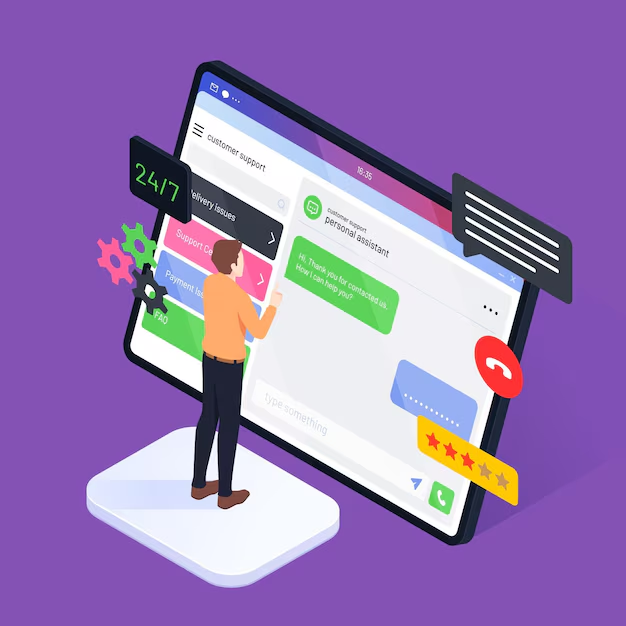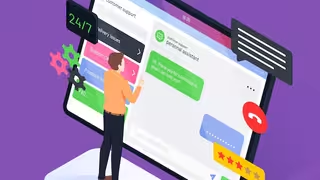How to Build an Email List That Converts: A Complete Guide

Building an email list that converts is one of the most effective ways to grow your business. Whether you run a small e-commerce store or a large online publication, a targeted email list can significantly boost sales, engagement, and brand loyalty. However, creating an email list that delivers results isn’t just about collecting addresses—it’s about attracting the right audience, providing them with value, and encouraging action.
In this guide, we’ll walk you through the step-by-step process to build an email list that converts, from the basics of attracting subscribers to creating compelling content that drives engagement.
1. Understand the Value of Your Email List
Before diving into tactics, it’s important to understand why having an email list is crucial. Unlike social media followers, an email list is something you own. Social media algorithms can change, limiting your organic reach, but your email list is a direct line to your audience. Email marketing has been proven to offer one of the highest returns on investment (ROI), with studies suggesting that every £1 spent on email marketing can generate an average return of £35 .
Your email list enables you to:
- Build personalised relationships with your audience
- Promote your products or services directly
- Drive traffic to your website or store
- Retain customers and encourage repeat purchases
2. Create a Compelling Lead Magnet
One of the most effective ways to grow your email list is by offering a lead magnet. A lead magnet is a valuable piece of content or offer that you give away for free in exchange for someone’s email address. The key is to ensure your lead magnet solves a problem or addresses a need for your target audience.
Popular lead magnet ideas include:
- Ebooks: A short guide or report that provides valuable insights on a particular topic.
- Checklists: Simple, actionable checklists to help your audience achieve a specific goal.
- Webinars: Free, live educational sessions that provide expert advice.
- Discounts or Coupons: Offers or discounts for your products or services in exchange for signing up.
Ensure your lead magnet is aligned with your business goals and attracts the right audience. For example, if you run a fitness business, offering a “30-Day Meal Plan” could be an effective way to attract health-conscious subscribers who are more likely to convert.
3. Use Opt-in Forms Strategically
To collect email addresses, you’ll need to place opt-in forms on your website. These are the forms visitors fill in to subscribe to your list. Where you place them and how you design them can have a big impact on your sign-up rate.
Key locations for opt-in forms:
- Homepage: A prominent opt-in form on your homepage, either as a banner or popup, ensures maximum visibility.
- Blog posts: Embed opt-in forms within your blog content, especially in high-traffic posts that generate a lot of organic traffic.
- Exit-intent popups: These popups appear when a visitor is about to leave your site, offering one last chance to subscribe.
- Sidebar: Adding a signup form to your sidebar can be an effective way to capture emails without disrupting the user experience.
Make sure your opt-in forms are easy to use. Keep them simple and to the point, asking only for the necessary information—usually just the email address and, if needed, the first name. Too many fields can discourage users from signing up.
4. Optimise Your Call to Action (CTA)
The call to action (CTA) on your opt-in forms is crucial. It’s what prompts visitors to take action and subscribe to your list. A weak CTA can mean fewer conversions, while a well-crafted one can significantly increase sign-up rates.
Instead of using a generic CTA like “Sign Up” or “Submit,” try to be more specific and engaging. For instance, if you’re offering an ebook, a CTA like “Get Your Free Ebook Now” is far more compelling than just “Subscribe.”
Additionally, emphasise the benefit the subscriber will receive by joining your list. For example, “Join 10,000+ marketers who receive exclusive tips every week” creates a sense of community and value.
5. Drive Traffic to Your Opt-in Forms
Once your lead magnet and opt-in forms are ready, you need to drive traffic to them. Here are some proven ways to attract visitors who are likely to subscribe:
- Social Media: Promote your lead magnet and opt-in forms across your social media channels. Consider running paid ads on platforms like Facebook or Instagram to target specific demographics.
- Guest Blogging: Write guest posts for reputable websites in your niche, and include a link to your opt-in form in your author bio.
- Collaborations: Partner with other businesses or influencers in your industry to promote each other’s email lists.
- Content Upgrades: Offer bonus content (e.g., downloadable PDFs or additional tips) within specific blog posts in exchange for email addresses.
Driving relevant traffic to your opt-in forms is key to building a high-quality email list. Remember, it’s not just about quantity—it’s about attracting subscribers who are genuinely interested in your content or products.
6. Nurture Your Subscribers with Valuable Content
Once you’ve built your email list, the next step is nurturing your subscribers. This means consistently providing valuable content that keeps your audience engaged and leads them towards conversion.
Start with a welcome email as soon as someone subscribes. This email should:
- Thank them for signing up
- Introduce your brand and what they can expect from your emails
- Provide the promised lead magnet, if applicable
- Include a call to action (e.g., visit your website, follow on social media)
After the welcome email, send regular content that delivers value to your subscribers. Depending on your business, this could include:
- Educational newsletters with tips and insights related to your niche
- Exclusive offers or discounts
- New product announcements
- Case studies or customer success stories
Personalise your emails as much as possible, using the subscriber’s name and tailoring content based on their preferences or behaviour. The more relevant and useful your emails are, the more likely subscribers will be to stay engaged and eventually convert.
7. Segment Your Email List for Better Targeting
Not all subscribers are the same, and they shouldn’t all receive the same content. Segmenting your email list allows you to send more relevant emails to specific groups of subscribers based on their interests, behaviours, or demographics.
For example, you might segment your list based on:
- Purchase history (e.g., loyal customers vs. first-time buyers)
- Interests (e.g., subscribers who downloaded a fitness guide vs. those who downloaded a nutrition guide)
- Location (e.g., offering location-specific promotions)
Segmented email campaigns have been shown to result in higher open and click-through rates compared to non-segmented campaigns(
). By sending more targeted emails, you’ll increase the likelihood of subscribers taking action, whether it’s making a purchase or engaging with your content.
8. Monitor and Optimise Your Campaigns
Finally, monitor the performance of your email campaigns to see what’s working and where there’s room for improvement. Key metrics to track include:
- Open rates: The percentage of recipients who open your emails.
- Click-through rates (CTR): The percentage of recipients who click on a link within your email.
- Conversion rates: The percentage of subscribers who take the desired action (e.g., make a purchase, sign up for an event).
Use this data to optimise your campaigns. For instance, if your open rates are low, experiment with different subject lines. If your CTR is low, try testing different email designs or calls to action.
In conclusion, building an email list that converts takes time, strategy, and consistent effort. By offering a valuable lead magnet, optimising your opt-in forms, nurturing your subscribers, and segmenting your list, you can create a powerful email marketing channel that drives engagement and conversions. Remember, the goal is not just to collect email addresses but to build relationships with your subscribers that encourage loyalty and trust over time.










